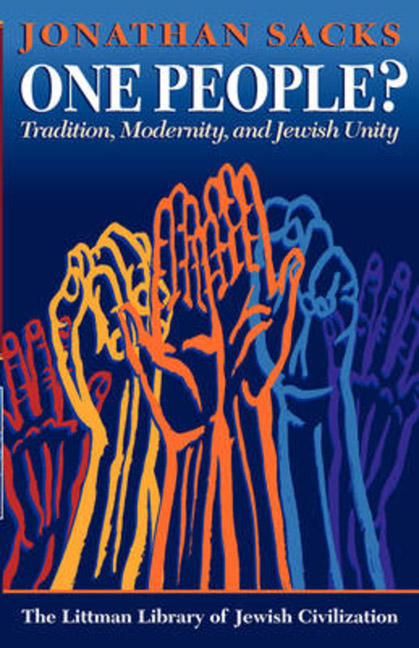Book contents
- Frontmatter
- Dedication
- Preface
- Contents
- Note on Transliteration and Place Names
- Abbreviations
- 1 The Crisis of Contemporary Jewish Thought
- 2 The Birth of the Adjectival Jew
- 3 Orthodoxy, History, and Culture
- 4 Orthodoxy and Jewish Peoplehood
- 5 Tradition and Diversity
- 6 Inclusivism
- 7 A Collision of Consciousness
- 8 Schism?
- 9 The Future of a People
- Bibliography
- Index
3 - Orthodoxy, History, and Culture
- Frontmatter
- Dedication
- Preface
- Contents
- Note on Transliteration and Place Names
- Abbreviations
- 1 The Crisis of Contemporary Jewish Thought
- 2 The Birth of the Adjectival Jew
- 3 Orthodoxy, History, and Culture
- 4 Orthodoxy and Jewish Peoplehood
- 5 Tradition and Diversity
- 6 Inclusivism
- 7 A Collision of Consciousness
- 8 Schism?
- 9 The Future of a People
- Bibliography
- Index
Summary
SECULARIZATION, as we have seen, does not eclipse religion, but it transforms it. Faced with social processes that threaten to undermine their values, religions must choose between accommodation and resistance. In the case of Judaism, the Reform, and later Conservative and Reconstructionist movements, emerged as modes of accommodation. Each was schismatic in the sense that it involved changes that went beyond the traditional parameters of Jewish belief and practice. But none announced itself as revolutionary. On the contrary, each sought to identify itself as heir to the Jewish past. Each saw itself as a Jewish denomination. The paradox is thatJudaism traditionally had no place for the concept of a denomination. Orthodoxy maintains that belief. The result is that liberal Judaisms and Orthodoxy are condemned to systematic mutual misunderstanding, a situation that leads to division without providing any shared language through which division might be transcended. Secularization proved destructive of Jewish unity while giving disunity a compelling momentum of its own.
What happened to Orthodoxy in the process? Thus far we have spoken of the various liberal non-Orthodoxies as accommodationist, perhaps seeming to imply that Orthodoxy, for its part, adopted a strategy of resistance. In fact, though, it was not uniformly so. There were a great variety of Orthodox responses. Some groups were opposed to and resisted the changes emancipation heralded. But others developed positive ideologies celebrating the new era. Yet others responded pragmatically, seeing no need to develop any ideological response to social change. Others again, while welcoming modernity, felt that the particular form it had taken in Europe would prove fatal for Jewish continuity and looked instead to a movement of renewal in Zion.
There was thus no single Orthodox strategy for confronting modernity. Instead there were strategies of every kind. This too is testimony to the fact that Orthodoxy is not a movement or denomination but a set of boundary principles within which lie a vast variety of culturally, intellectually, and spiritually distinguishable tendencies. In this chapter we consider Orthodox responses to emancipation and the collapse of the traditional structures of Jewish community. How did such a highly elaborated body of law and doctrine give rise to so diverse a range of reactions? Why did there emerge not one Orthodoxy but many?
- Type
- Chapter
- Information
- One People?Tradition, Modernity, and Jewish Unity, pp. 44 - 64Publisher: Liverpool University PressPrint publication year: 1993



